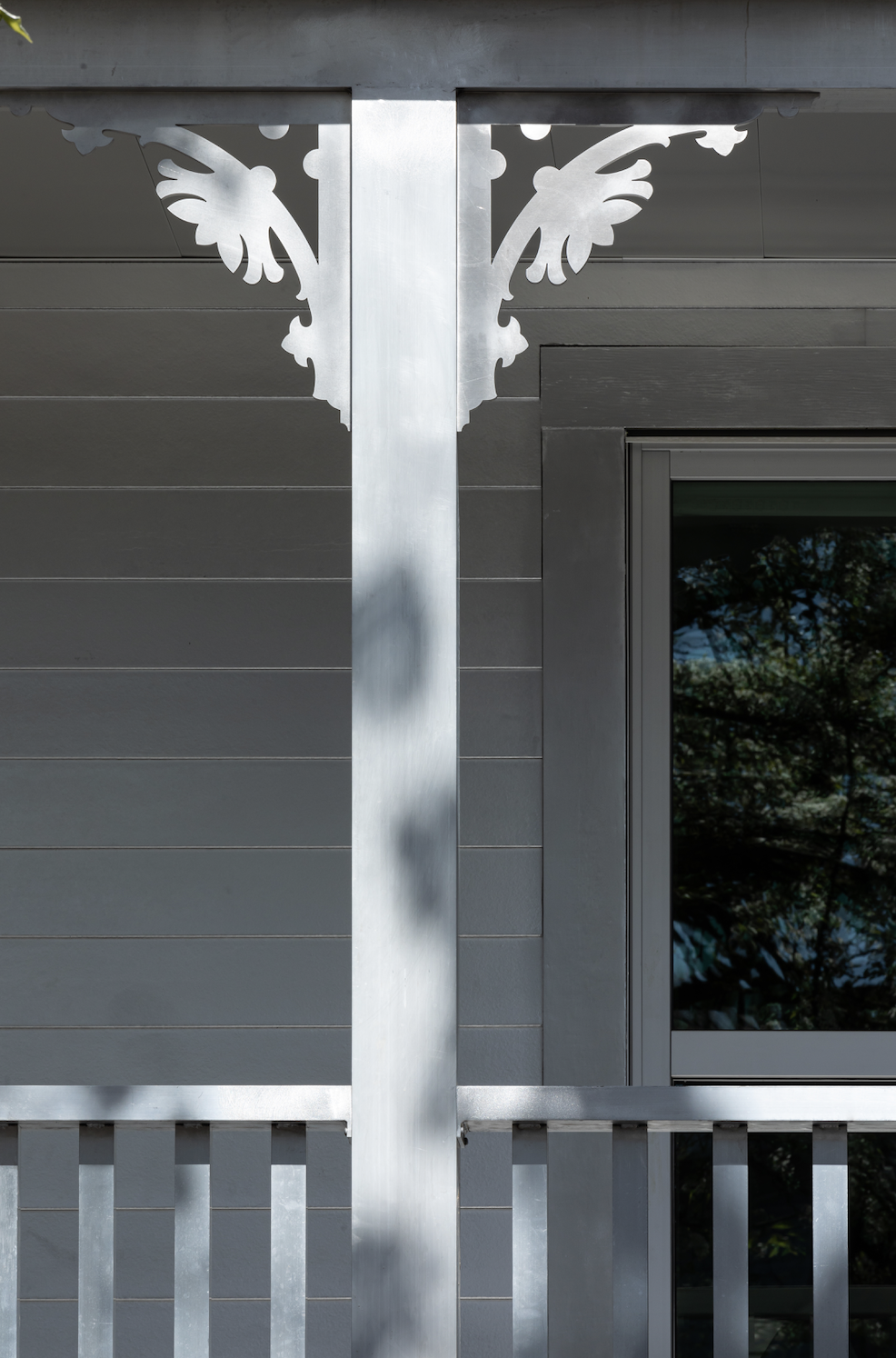Chinatown Ghost House
517 Union Street, VancouverHow does one provide a legitimate architectural addition to a historic neighbourhood without making a fake ‘old’ building? It seems the addition needs to be contextual without pretending to have been built a hundred years ago. (Venetian facades in Las Vegas are a simple example to show how this has no respectable place, other than as kitsch). The notion to ‘pretend’ in order to provide a continued tradition of the style was the mandate for years at City of Vancouver Zoning Department, throughout the City, in their Design Guidelines. Now there is a move away from this toward a desire to take elements of proportion, material and scale, and reinvent anew whilst not faking the old. But ultimately, a modern façade falls short of being entirely contextual, and in time most often looks dated. These attempts from previous decades now become the eyesores of the Strathcona neighbourhood.
Our concept for 517 Union Street is to twist one element only, the material of the original facade, in order to make it at once fresh, conceptually interesting and even halting, and yet perfectly match the original building façade in all other aspects. We are taking the very façade from the archive photograph of the building that stood until 1949, matching many of the houses that still stand along this street, and replicating every piece of wood identically but in aluminum, creating an almost ghostly image of what once stood there. It would not appear ‘real’ in some sense, yet would be contextually accurate. It is a reverential historic gesture, and without a second glance, might blend in anonymously.
The art world is rich in this kind of twist of materiality to press the viewer into alternative readings of an object. Two recent examples are Rodney Graham’s ‘Screen Door’, 2005, that replaces the aluminum of a generic domestic screen door with solid silver.
Secondly, Do Ho Suh has been switching material from regular building construction materials to sheer fabric, here in ‘Home within home within home’, 2013 and ‘Passage’, 2016.
One of the most pre-eminent designers of our generation, Philippe Starck, originally made his mark with a chair in this vein, the Richard 3rd chair, 1985, and later his transparent Loius Ghost chairs, 1991.
Photos by Ema Peter, winter photo by Laurel Murray:







